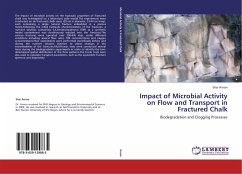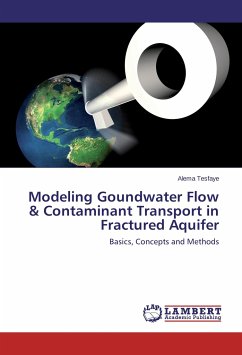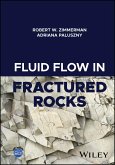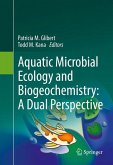The impact of microbial activity on the hydraulic properties of fractured chalk was investigated on a laboratory scale model.The experiments were conducted on six fractured chalk cores (20 cm in diameter, 23-44 cm long), each containing a single natural fracture embedded in a porous matrix.Following the initial hydraulic characterization of the fractures, a nutrient solution containing 2,4,6-tribromophenol (TBP) as a synthetic model contaminant was continuously injected into the fractures.The various fractures were operated over 250-630 days, under different conditions including several flow rates, TBP concentrations and oxygen concentrations.Flow experiments were performed periodically before and during the nutrient solution injection to assess changes in the transmissivities of the fractures.Multi-tracer tests were conducted several times during the biodegradation experiments in order to identify the two-dimensional spatial distribution of the flow patterns.The tracer tests were also used to calculate transport parameters, such as the equivalent fracture aperture and dispersivity.
Bitte wählen Sie Ihr Anliegen aus.
Rechnungen
Retourenschein anfordern
Bestellstatus
Storno








